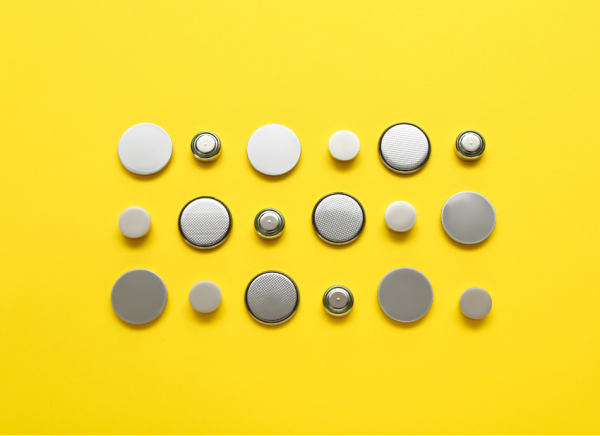Button battery dangers for children
Key points about button battery dangers for children
- Many electronic toys and devices have button batteries.
- They are very dangerous for young children if swallowed or put in nostrils or ears.
- If a child swallows or puts a button battery in their nose or ears, it can cause severe burns and damage within 2 hours.
- If you think your child has swallowed a button battery or put one in their nostril or ear, take immediate action – go straight to the hospital.
- The content on this page comes from KidsHealth(external link).

Video: Product Safety - Button battery time-lapse
This video may take a few moments to load.
(Ministry of Business, Innovation and Employment (MBIE), 2018)
Button batteries are everywhere. They are found in remote controls, scales, calculators, singing or flashing greeting cards, watches, thermometers, decorations and flashing jewellery.

Image credit: Canva
Go straight to hospital
Take immediate action. Go straight to your nearest hospital emergency department if you think your child has swallowed a button battery, or put a button battery in their nose or ears.
Tell reception, doctors and nurses you think your child might have swallowed a button battery. Getting medical treatment straight away is very important.
Honey can help
If the battery was swallowed in the last 12 hours, and your child is 1 year of age or older and able to swallow you can give them honey.
Before arriving at the hospital emergency department, give your child 2 teaspoons (10mL) of honey every 10 minutes – up to 6 doses. Do this only if it won't delay getting to the hospital.
Remember, it's very important to get to the hospital emergency department straightaway – without delay.
For babies under 12 months, there's a risk of honey causing botulism. For this reason, honey is usually not recommended for this age group. But, there is much greater risk of serious burns and damage from swallowing the button battery.
Don't give your child any other food or drink. It's best not to make them vomit.
Know the battery ID number?
If you have the identification number of the battery (found on the battery's pack), take it with you to hospital. This could be really helpful to the medical team.
Tamariki under 6 years of age are at the greatest risk of injury from button batteries. The batteries look shiny and interesting to young children.
To keep your children safe:
- Search your home, and any place your child goes, for gadgets that may contain button batteries.
- Keep button battery-controlled devices out of sight and reach of babies and small children, and keep loose batteries locked away.
- Share this life-saving information with caregivers, friends, family and whānau.
Apps reviewed by Healthify
You may find it useful to look at some First aid and emergency apps.
Foreign body ingestion/inhalation clinical pathway(external link) Starship Child Health, NZ
Foreign body ingestion(external link) Royal Children's Hospital, AUS
Button battery ingestion triage and treatment guideline(external link) National Capital Poison Center, US
Apps
Credits: Content shared between HealthInfo Canterbury, KidsHealth and Healthify He Puna Waiora as part of a National Health Content Hub Collaborative.
Last reviewed:





